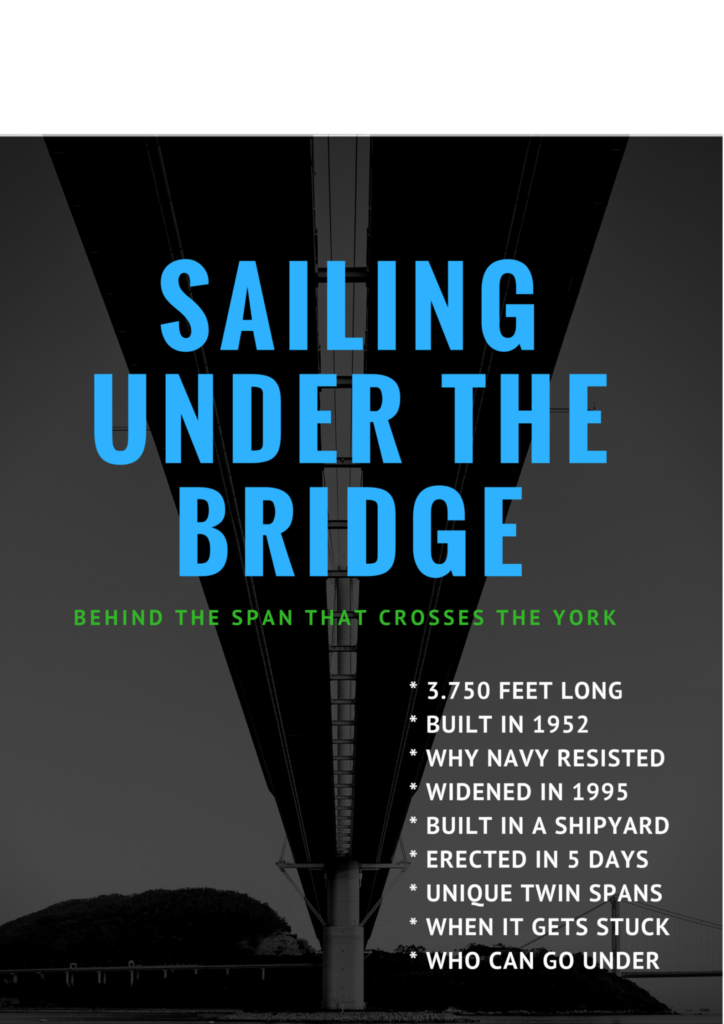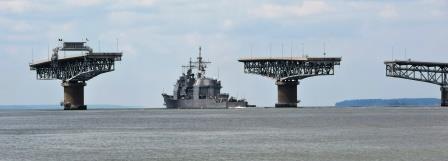Although it’s taken for granted by locals, the Coleman Bridge is a spectacular piece of engineering and a vital link between two regions of eastern Virginia.
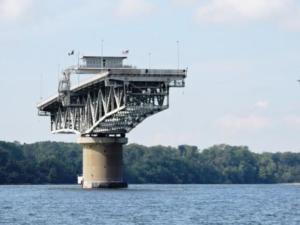 After the boom years of World War II, it became apparent the ferry from Yorktown to Gloucester Point would be insufficient to transit commuters and locals. The bridge was completed in 1952 and named for Virginia’s first highway commissioner, George P. Coleman. In the early 1950s the river froze over for the last time. Ice breaker ships had to come in.
After the boom years of World War II, it became apparent the ferry from Yorktown to Gloucester Point would be insufficient to transit commuters and locals. The bridge was completed in 1952 and named for Virginia’s first highway commissioner, George P. Coleman. In the early 1950s the river froze over for the last time. Ice breaker ships had to come in.
The US Navy opposed the bridge as effectively blockading access to the nearby Naval Weapons Station. The Pentagon worried that a traditional draw bridge would inevitably get stuck in a V-position and wouldn’t let ships pass. Instead, the Coleman was built as a swing-span bridge, with two spans to allow for two ships at once. It is the largest of its kind in the United State and second largest in the world. The bridge itself runs 3,750 feet.
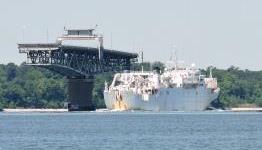 The next closest bridge is at the top of the river in West Point, two bridges actually. In the 1980s, politicians pushed for a third crossing, from Lightfoot or Croaker in James City to Almondsville. I interviewed retired Speaker of the House John Warren Cook for his views, since he also was the longtime publisher of the Gloucester-Mathews Gazette-Journal.
The next closest bridge is at the top of the river in West Point, two bridges actually. In the 1980s, politicians pushed for a third crossing, from Lightfoot or Croaker in James City to Almondsville. I interviewed retired Speaker of the House John Warren Cook for his views, since he also was the longtime publisher of the Gloucester-Mathews Gazette-Journal.
“Son, the engineers tell me that bridges still connect at the closest points of land. That hasn’t changed.” Sure enough, VDOT widened the Coleman to four lanes instead of building a third crossing.
They beat the deadline
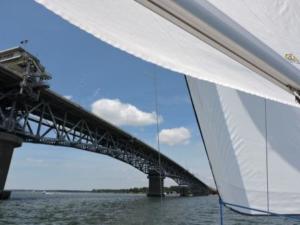 The widening was done in 1995 as a total rebuild, done in a shipyard and ferried up the Bay on barges. The contractor was given ten days to tear down the old bridge and replace it. They did it in five.
The widening was done in 1995 as a total rebuild, done in a shipyard and ferried up the Bay on barges. The contractor was given ten days to tear down the old bridge and replace it. They did it in five.
A retired Navy captain told me this very bridge is used at the Navy training center in Newport, Rhode Island, to simulate swing spans. “The first few times you try it on the simulator, they make it easy. Then they crank it up to 6 knots and you have to fight it.”
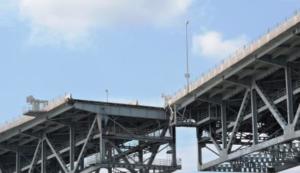 Today the bridge gets stuck once or twice a year, but only for a few minutes. We sail easily under the center span, whose clearance is 80 feet at high tide. Whenever a Navy ship comes in, visitors are astonished to see the bridge slowly swing horizontally—not once, but twice. It is an engineering marvel that is as exciting to see in action as the warships passing through.
Today the bridge gets stuck once or twice a year, but only for a few minutes. We sail easily under the center span, whose clearance is 80 feet at high tide. Whenever a Navy ship comes in, visitors are astonished to see the bridge slowly swing horizontally—not once, but twice. It is an engineering marvel that is as exciting to see in action as the warships passing through.
Let’s Go Sail, under the bridge
Check rates and pick a day for a sailboat charter. See reviews on Trip Advisor.

